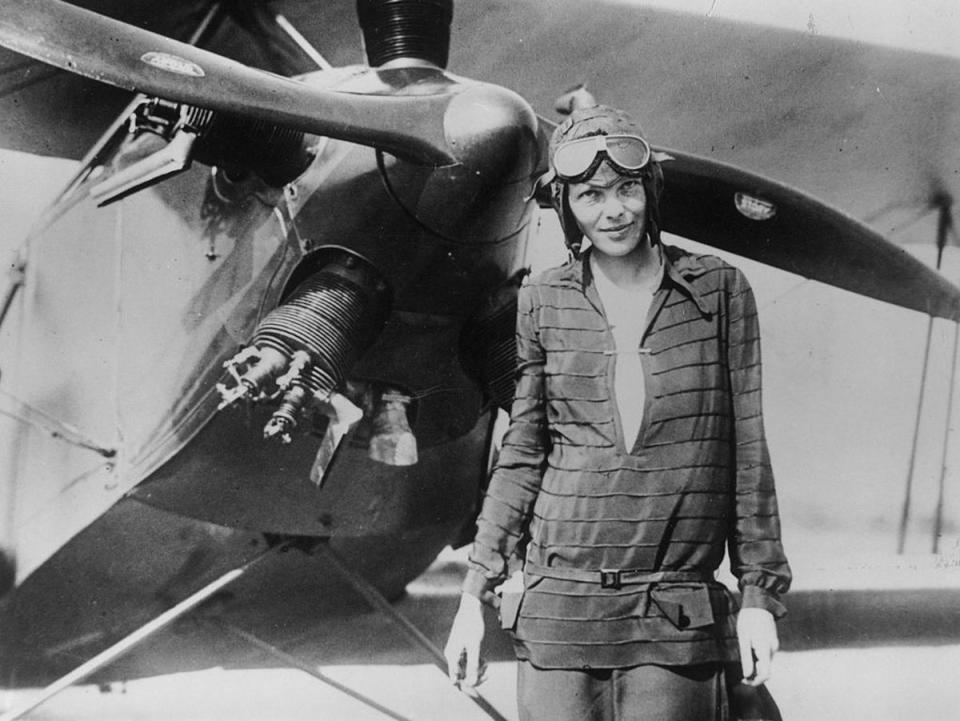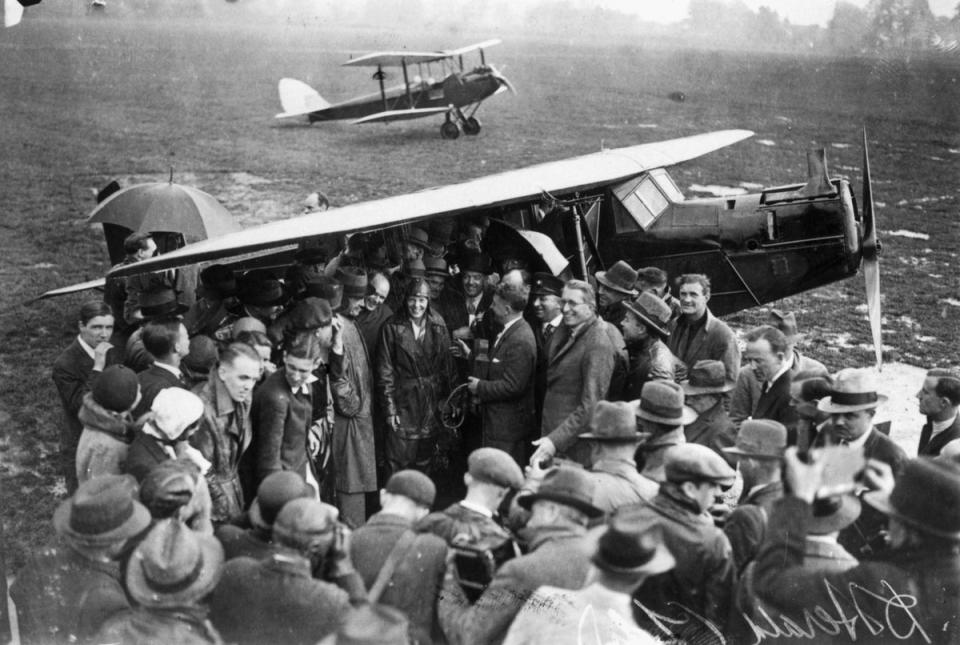Amelia Earhart made her last airborne radio call at 8:43 a.m. local time, about an hour after alerting the Coast Guard cutter Itasca that she was low on fuel and could not see her target destination, Howland Island.
“We are on route 157 337,” she said from the cockpit of her Lockheed 10-E Electra aircraft. “We will repeat this message. We repeat this at 6210 kilocycles. To wait.”
She did not repeat the message.
Earhart’s fate is one of America’s greatest enduring mysteries. Her doomed 1937 attempt to become the first woman to circumnavigate the world by air led to the most extensive – and expensive – rescue operation in the history of the US Navy and Coast Guard.
Since then, countless researchers, reporters and historians have tried to figure out what really happened to Earhart and her navigator, Fred Noonan, high above the Pacific Ocean on the day of their disappearance.
Advances in deep-sea scanning technology – and a hefty $11 million investment – may finally provide definitive answers.


Deep sea discovery
Deep Sea Vision, a Charleston, South Carolina-based company, believes it has finally found Earhart’s plane at the bottom of the Pacific Ocean.
The company began scanning the ocean floor in September. The powerful sonar, linked to Hugin, a $9 million submarine, searched the murky depths, scanning a total of more than 5,200 square kilometers of the region where Earhart is believed to have crashed.
About 16,000 feet below the surface of the Pacific Ocean, resting among the silt and marine sediment, Hugin’s sonar detected something unusual; the shape of an airplane.
“Well, it would be hard to convince me that this is anything but an airplane, for one, and two, that it is not Amelia’s airplane,” Deep Sea Vision founder Tony Romeo said in an interview with NBCs Today show. “There are no other known crashes in the area, and certainly not from that era in that kind of design with the tail that you can clearly see in the image.”
Mr. Romeo, a former U.S. Air Force intelligence officer, sold his real estate and put $11 million into financing the expedition to find Earhart’s lost plane.
“This might be the most exciting thing I’ll ever do in my life,” he told the BBC Wall Street Journal. “I feel like a ten-year-old going on a treasure hunt.”
Although excited, Mr. Romeo maintained his expectations after the initial discovery. He admitted that the images could be those of rocks or some other underwater object. However, he noted that the image depicts the shape and dimensions of the plane Earhart flew on her last trip.
Unfortunately for Deep Sea Vision, the image was one of many thousands taken during their scans, and the anomaly was not discovered until three months after it was taken. By this time the crew was far from the discovery site.
With an image and coordinates in hand, the next step in unraveling the mystery will require examining the physical remains.
The rise of Earhart
Earhart’s disappearance was the culmination of a decade of newspaper and radio stories documenting her record-breaking flights.
On June 17, 1928, at the age of 30, she became the first woman to fly an airplane – a bright red Lockheed Vega 5B, which she called “old Bessie, the fire steed” – across the Atlantic Ocean. The endeavor made headlines across the country.
She later became the first person to complete a solo flight across the Pacific Ocean, from California to the Hawaiian Islands in 1934.
Earhart was initially treated as an aviation oddity because of her gender; news reports at the time called her the first “girl” to fly across the Atlantic Ocean, and another called her an “aviatrix”. At the time, the skies were dominated by men. But as she continued to prove her prowess in the cockpit, she gained fame as a great pilot, rather than as a curious outlier. She still used her growing fame to pursue equality in the air; in an interview with the Evening star in 1929, Earhart implored the public to “give women a chance in the air.”


“Women can qualify in the air like in any other sport. Their influence and endorsement are critical to the success of commercial aviation,” she said at the time. “Women and girls write to me by the thousands to learn the truth about aviation and what women’s opportunities are. There is nothing in a woman’s makeup that would make her as a pilot inferior to a man. The only barrier to Her rapid success is her lack of opportunity to get a good education.”
After numerous successful and record-breaking flights in the late 1920s and early 1930s, Earhart set her sights on a new goal; becoming the first woman to circumnavigate the planet in an airplane.
After her disappearance, the public remained somewhat hopeful that she would be able to fly again one day. But after a two-month search that found no trace of her or Noonan, the pair were presumed dead.
Find Amelia
Investigators have been trying to find Earhart’s remains — or any evidence of her fate — since her disappearance nearly 90 years ago.
The most recent search to yield any results occurred in 2012, when the International Group for Historic Aircraft Recovery discovered that Earhart may have sent numerous emergency radio calls after her crash. Those broadcasts, the group claims, were ignored.
“Amelia Earhart did not simply disappear on July 2, 1937. Radio distress calls believed to have been sent from the missing plane dominated headlines and drove much of the U.S. Coast Guard and Navy search efforts,” said Ric Gillespie, the executive director of TIGHAR. told Discovery news. “When the search failed, all reported radio signals after the loss were categorically dismissed as hoaxes and have been largely ignored ever since.”
He believes Earhart crashed on Gardner Island, about 350 nautical miles from her intended destination on Howland Island. According to his theory, Earhart called for help for a week before the tides washed her plane out to sea.
Mr Gillespie was skeptical about the discovery of Deep Sea Vision.
“Despite the media hype, this is NOT a sonar image of Amelia Earhart’s plane,” he wrote on his Instagram page.
In 2018, researchers used modern forensics to examine a series of human remains found on Nikumaroro Island in 1940 that were candidates for Earhart’s remains. According to Richard L. Jantz, an anthropology professor at the University of Tennessee studied the remains and determined that they are likely those of Earhart.
Mr Jantz theorized that Earhart landed her plane at Nikumaroo and died as a castaway on the island, according to The Florida Times Union.
Now the discovery of Deep Sea Vision appears to shake up what we know about her final days.
Next steps
Sonar experts will have to take a closer look at the object discovered by Deep Sea Vision before it can be confirmed that it is actually Earhart’s lost plane.
“Until you physically look at this, there’s no way to say for sure what that is,” expert Andrew Pietruszka told the newspaper. Wall Street Journal.
Mr Romeo said he planned to take his team back to the site to collect more images of the object.
“The next step is confirmation and we need to know a lot about that. And it looks like there’s some damage. I mean, it’s been there for 87 years,” he said.
Until Deep Sea Vision can return, the mystery of Earhart’s lost plane will remain just that.
“I personally think this is the great mystery of all time,” said Romeo. “Certainly the most enduring aviation mystery of all time.”